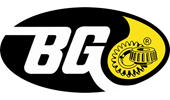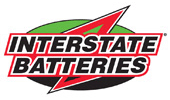AUTONET TV
Archive for November 2022Something to Latch On To (Hood Latch Safety)Posted November 27, 2022 9:56 AMThe other day, a driver was trying to open his vehicle's hood so he could add some windshield washer fluid. But when he pulled the hood release inside the car, nothing happened. Usually, opening any hood is a 2-step process. You pull the hood release (which is usually a handle under the dashboard to the left of the steering column) and listen for the hood to pop up slightly. (It doesn't open all the way because it has a safety latch to prevent you from accidentally opening it up while you're driving.) Then, you get out and find the latch, usually through the grille near the hood. There's a little handle on it which you push, slide or pull (there are a few different types) at which point the hood can be opened up all the way. But in this driver's case, the hood would not release at all when he pulled the handle inside. Not knowing what to do, he called his service advisor, who told him to bring it over. The reason? A hood with a broken latch could be a safety hazard since it is possible it's not securely closed. And in this condition, it's possible for the hood to suddenly release while you are driving, obscuring your view of the road. Latch issues can be caused by many things, perhaps a broken cable between the hood release and the latch. It's possible that cable just detached or frayed after being opened so many times. If a hood release cable isn't kept lubricated, it can corrode and just lock up. In this driver's case, the cable had corroded and broken, so it had to be replaced. Unfortunately, many times you won't know you have a problem with your hood latch until one time you pull it and it breaks without warning. When your vehicle is in for routine maintenance like an oil change, a technician will often keep an eye out for signs that your hood latch needs attention so you don't get "locked" out of your engine compartment. McLearen Shell The Last Gas (Fuel Pump Replacement).Posted November 20, 2022 7:42 AMYou're heading down the road and you notice your vehicle is sputtering, like it's running out of gas. But the gauge show's it's still got a quarter of a tank. So what gives? It could be that your fuel pump is failing, meaning your engine is not getting enough gas to run properly. While fuel pumps are built to last a long time, sometimes they fail. Other symptoms you may have a bad fuel pump include your vehicle stalling and then refusing to start again, the engine overheating or a hum or whirr coming from around the gas tank. Or, your Check Engine light may come on. Most fuel pumps are in the gas tank. They have a small electric motor in them. When you bring your vehicle to our service center, a technician will run tests to confirm the fuel pump is getting power to it but has failed. Some vehicles have an access panel so the fuel pump can be removed and replaced. But in some vehicles that don't have that access panel, the technician has to drain the fuel and take the tank out of the vehicle to be able to replace the fuel pump inside. Some parts such as brackets that attach the pump can be reused when the new fuel pump is installed. Most technicians will recommend replacing the fuel filter at the same time the fuel pump is changed out. If the technician has to remove the fuel tank, they'll also check for rust and corrosion and replace any affected parts. Keep one thing in mind - your vehicle's fuel pump is in the fuel tank because it's kept cool and lubricated by the gasoline in the tank. Try not to let your fuel level go below a half or quarter of a tank to maximize the life of your fuel pump. Also, try to use Top Tier gasoline that has higher standards than some other fuels. Your engine—and fuel pump—will thank you. McLearen Shell A Fluid Situation (Check Fluid Levels)Posted November 13, 2022 8:27 AMThere's one fluid in your car you are always careful to keep at a certain level: the fuel. If you don't have fuel, you're not going anywhere. Your vehicle has other fluids which are vitally important to proper and safe operation, too. So, here's a "level" headed approach to those "other" fluids. Engine oil. This one's probably the most important fluid to maintain at the proper level. Without enough oil, you'll wear out your engine prematurely. Sometimes vehicles have warning lights on the dash that will tell you to get your oil checked. Don't ignore that one; get it checked immediately. Certainly don't go on a long trip at high speeds with your oil level low. Oh, and it's not good to have too much oil in, either. Our pros at McLearen Shell can advise you on oil levels and tell if you if you should be concerned about abnormal fluctuations. Windshield washer fluid. OK, this is one you probably know about. You certainly miss it when it runs out. You find yourself trying to clean your windshield with the wipers but you need a little liquid help. Unless you live in an area that requires you to use an awful lot of windshield washer fluid, one fill-up can often last between oil changes. Modern vehicles have large enough windshield washer fluid reservoirs to keep you going for quite a while. Engine Coolant. Here's another fluid you need to keep your engine running properly. You need it to keep the engine running at the proper temperature. Plus, you'll need it for heat when the temperature gets chilly outside. Power Steering Fluid. If you have a vehicle that uses power steering fluid, it's important to keep the correct amount in your system. Without enough of it, you might find steering difficult. Plus, if you’re losing power steering fluid, our experts at McLearen Shell can find out why and perhaps prevent a more expensive repair later. Brake Fluid. You may have heard of hydraulic brakes. Hydraulic refers to the fluid and is one of the key reasons your brakes work. Levels should be checked regularly and, like power steering fluid, if you're losing brake fluid, a technician needs to find out why so you can get the issue repaired and maintain your stopping ability. If you have regular preventative maintenance performed at McLearen Shell, we’ll keep an eye on all of these fluids when you bring your vehicle in for service. McLearen Shell Shifty Letters PRNDL (Transmission)Posted November 6, 2022 10:01 AMYou probably figured out those shifty letters. They're what you see on your automatic transmission shifter and stand for Park, Reverse, Neutral, Drive and Low. Your automatic transmission is one of the great automotive inventions; here are some ways you can keep yours working well. Maintain your transmission regularly. A technician will check your transmission fluid's level and even its appearance and smell. If it's dark or has an unusual odor, that could be a sign of trouble. Change from one transmission direction gear into another only when your vehicle is stopped. So many drivers want to switch from Reverse to Drive quickly or the other way around. If you do that when the vehicle is moving, you can damage your automatic transmission. Keep your vehicle's cooling system in top shape. What does the cooling system have to do with the transmission? It helps keep the transmission fluid from overheating. Follow the manufacturer's recommendations for maintaining your transmission. Some recommend at least an annual checkup by a trained technician. Let your powertrain warm up a little before overtaxing it. Especially in cold weather, don't step on the throttle too aggressively before all components are warmed up. That way both your engine and transmission will last longer. Transmissions can be costly to fix. If you treat your powertrain with respect and regularly maintain it, you'll not only avoid expensive repairs, but you’re also much less likely to find yourself stranded because of a transmission problem. McLearen Shell | ||
SearchArchiveMay 2016 (16)June 2016 (4) July 2016 (5) August 2016 (4) September 2016 (4) October 2016 (5) November 2016 (4) December 2016 (4) January 2017 (5) February 2017 (4) March 2017 (4) April 2017 (4) May 2017 (5) June 2017 (4) July 2017 (5) August 2017 (3) September 2017 (3) October 2017 (4) November 2017 (5) December 2017 (3) January 2018 (5) February 2018 (3) March 2018 (4) April 2018 (5) May 2018 (4) June 2018 (4) July 2018 (5) August 2018 (4) September 2018 (5) October 2018 (4) November 2018 (4) December 2018 (5) January 2019 (5) February 2019 (4) March 2019 (5) April 2019 (4) May 2019 (4) June 2019 (5) July 2019 (4) August 2019 (4) September 2019 (5) October 2019 (4) November 2019 (4) December 2019 (5) January 2020 (5) February 2020 (4) March 2020 (5) April 2020 (4) May 2020 (5) June 2020 (4) July 2020 (4) August 2020 (5) September 2020 (4) October 2020 (4) November 2020 (5) December 2020 (4) January 2021 (6) February 2021 (4) March 2021 (4) April 2021 (4) May 2021 (5) June 2021 (4) July 2021 (4) August 2021 (5) September 2021 (4) October 2021 (5) November 2021 (3) December 2021 (4) January 2022 (6) February 2022 (4) March 2022 (4) April 2022 (4) May 2022 (5) June 2022 (4) July 2022 (5) August 2022 (4) September 2022 (4) October 2022 (5) November 2022 (4) December 2022 (4) January 2023 (5) February 2023 (4) March 2023 (4) April 2023 (5) May 2023 (4) June 2023 (4) July 2023 (5) August 2023 (4) September 2023 (4) October 2023 (5) November 2023 (4) December 2023 (5) January 2024 (5) February 2024 (4) March 2024 (5) April 2024 (4) May 2024 (4) June 2024 (5) July 2024 (4) August 2024 (4) September 2024 (5) October 2024 (4) November 2024 (4) December 2024 (5) January 2025 (4) February 2025 (4) March 2025 (5) | CategoriesFuel Economy (8)Alternator (5)Service Standards (3)Headlamps (4)Maintenance (9)Transmission (4)Timing Belt (3)Fluids (6)Battery (9)Steering (7)Keys to a long lasting vehicle (2)What Customers Should Know (58)Auto Safety (4)Air Conditioning (7)Brakes (11)Exhaust (6)Fuel System (5)Customer Detective Work (1)Fuel Saving Tip: Slow Down (2)Cooling System (7)Safety (2)Safe Driving (1)Drive Train (2)Tires and Wheels (2)Dashboard (1)Tire Rotation and Balancing (2)Oil Change (5)Service Intervals (1)Suspension (2)Shocks & Struts (3)Check Engine Light (3)Winter Prep (3)Fuel Pump (1)Tires (7)Trip Inspection (1)Alignment (5)Automotive News (1)Brake Service (3)Spark Plugs (1)Windshield Wipers (2)TPMS (1)Inspection (2)Shocks and Struts (2)Fuel Filter (1)Water Pump (1)Differential Service (1)Wheel Bearings (1) | |
Reviews
|
Excellent work. Josh always does all the maintenance for my Porsche, VW Taureg, and Subi Outback. I can always count on him doing what is needed and never trying to upcharge me for work that is not needed. Jack, 11/30/2021 |
Took our Acura RDX in for brake service today. The staff at McLearen Shell did an excellent job, replacing the front discs & rotors. They advised that the rear pads still had 50% material remaining. Have had a variety of automobiles serviced at this service station over the last 25 years and there service remains outstanding and very reasonably priced. Highly recommended. Rob Saunders, 04/21/2022 |
Great team at McLearen Shell, have regularly changed out brakes, bulbs, oil, valve cover gasket, spark plugs, etc. on a 1998 Gen 4 Camry LE for the past three years. Trustworthy, professional and they know these older still-running vehicles. Always respectful to Ladies interested in vehicle mechanical function and maintenance as well Margaret, 06/16/2021 |













